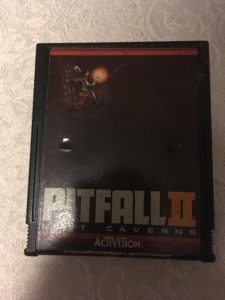Inspired by an ancient computer book I wrote a simple python game. In 1978 David H. Ahl edited BASIC Computer Games: Microcomputer Edition 101 Great Games to play on your home computer. I wrote a simple computer game in python.
#!/usr/bin/python3
import random
cont = True
dist = 0
mummies = 0
trvl = 0
water = 3
thirst = 5
act = 0
trbl = 0 #distance of mummies to you
life = True
print(“You stolen the necklace of Rameses III. Mummies are after you!”)
while cont == True:
print("Distance Traveled : " + str(dist))
print("0 Drink.")
print("1 Medium Pace.")
print("2 Dash.")
print("\n")
act = input("What do you do?")
print("\n\n")
if act == "1":
print("You march through the desert...")
dist = dist + 2
thirst = thirst - 2
elif act == "2":
print("You dash trough the desert...")
dist = dist + 3
thirst = thirst - 3
elif act == "0":
if water > 0:
print("You drink water.")
water = water - 1
thirst = thirst + 3
print("You have..." + str(water))
print("drinks of water left.")
if water <= 0:
print("You've nothing to drink.")
else:
print ("---Thanks for Playing---")
cont = False
if int(act) == 1 or int(act) == 2:
dice = random.randint(1, 6)
if dice == 1 or dice == 2:
print("The desert stretches beyond you.")
elif dice == 3 or dice == 4:
print("You are running among the sand dunes.")
elif dice == 5:
print("Skull of a camel stairs at you as you pass.")
elif dice == 6:
print("You found an oasis.")
print("You fill your cantine water.")
print("You have..." + str(water))
print("drinks of water left.")
if thirst <= 1:
print("\a---YOU NEED TO DRINK BADLY---")
if thirst < 0:
print("---And the desert is getting to you!!!---")
print("\a")
if thirst < -5:
print("You surcome to thirst.")
life = False
cont = False
trvl = random.randint(1, 2)
mummies = mummies + trvl
trbl = dist - mummies
if trbl == 3:
print("You do not hear the MUMMIES.")
if trbl == 2:
print("You see the MUMMIES in the distance behind you.")
if trbl == 1:
print("You MUMMIES are yipping at your heels.")
if mummies >= dist:
print("The MUMMIES capture you.")
life = False
cont = False
if dist >= 20 and cont == True:
print("---YOU MADE IT---")
print("---YOU'VE FOUND THE EDGE OF THE DESERT---")
cont = False print(“—-GAME OVER—“)
if life == True:
print(“You traveled ” + str(dist))
print(“With ” + str(water) + ” drinks of water remaining.”)

